#ancient monastics
Text

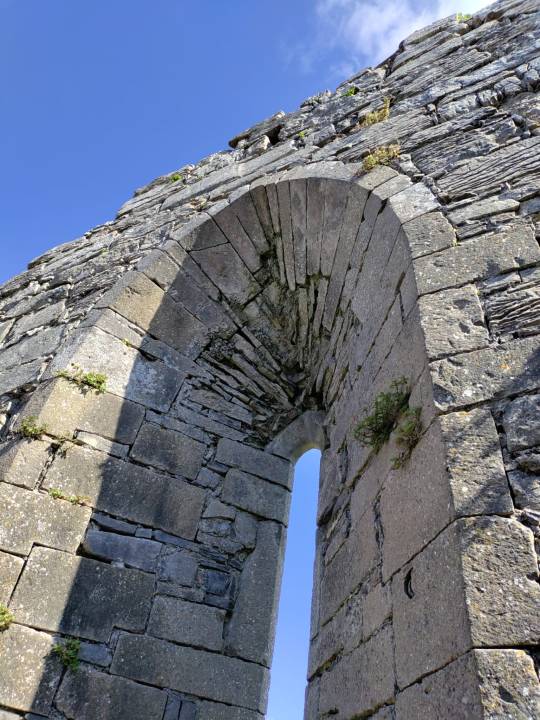



Na Seacht dTeampaill - The Seven Churches, Sruthán, Onaght, Aran Islands, Co. Galway
#Na Seacht dTeampaill - The Seven Churches#Aran Islands#na seacht dteampaill#seven churches#saint benedict#Benedictine monastery#ancient monastics#mysticism#queer mystic#gay mystic
11 notes
·
View notes
Text
My Extemporaneous Homily for Trinity Sunday
[This extemporaneous homily given today on the Feast of the Holy Trinity at The Chapel of St. George is transcribed from an audio recording. I added a few clarifying words to the transcription, but I’ve otherwise preserved the spontaneity of the form in which it arose and was originally shared. Subsequent to the Mass this morning, I’ve been reflecting a lot on the work of the éskhaton (the ‘last things’, the ‘completion’) and its relationship to related notions in other traditions. I will likely do some reflective writing on that to share with all of you soon. But, in the meantime, here’s my little ‘Word of Life’ from this morning’s Mass. May it bless.]
The concept that is really in my heart and mind this year as I reflect on the Feast of the Holy Trinity is ‘participation’. And I’m thinking of this in terms of a particular technical theological framework, which has real application for us, I think. It’s known as ‘participatory eschatology’. ‘Participatory eschatology’ simply means that the way the final or last things, the completion of things, comes about is through our direct participation in the divine work. That’s all it means. Rather than us sitting around waiting for something to come from the sky and magically change everything, we participate in that transformative power of the divine will, as it goes out into the whole of Creation, and, according to an ancient mode of Christian theology I very much embrace, eventually brings all life back into union with itself. That notion is called apokatástasis: the ultimate ‘wholling’ or re-union of all Creation.
We’re all invited to participate in that movement, in that divine unfoldment. And I think if the doctrine of the Trinity is worth anything, it’s that. It’s a reminder that we’re being invited to participate, not merely to have ideational constructs that sound fancy or that we’ve inherited and assumed as ‘beliefs’ without really understanding what they point to. If we get stuck there, we’re in trouble. And we’ve been stuck there a lot throughout the history of the Church, particularly in the West. We’ve been stuck a lot in ideas and beliefs. And that’s not a good place to be.
I’d like to read you something from the early Church. It’s a wondrous thing to look back at some of this theology—particularly the monastic witnesses from the early Church—and realize that a more expansive, breath-embracing understanding of Christian tradition was present in the beginning. It’s not a trend that we came up with because we wanted to conform the Church to our own modern ideas—it’s not that at all, actually. This expansive, mystical understanding of theology is really present in the early Church. This is from St. Macarius the Great. He says:
‘The soul that is found worthy to participate in the Holy Spirit and be illuminated by Her radiance, and by the ineffable glory of Her beauty, becomes Her throne and Her dwelling place. Such a soul becomes all light, all face, all eye. The soul becomes entirely covered with the spiritual eyes of light; nothing in it is left in shadow.’
Elsewhere St. Macarius also says that ‘God reveals God’s own nature to the soul and is discovered by the soul in direct knowledge (gnōsis), in wisdom, love, and faith….[with] the overseeing guidance of the spiritual intelligence’, so that the soul’s divine participation might blossom. ‘In short,’ he continues, ‘God made the soul like this so that it could be His own bride, that it might have communion with the Divine, to be merged in union with God, and so become as one spirit with God.’
That’s the journey, my friends—nothing less than that. To become merged in totalizing re-union with the Divine Ground: that’s our task. Not just to help a few things in the world here and there—that’s great too, but it’s really this divine re-union or ‘divinization’ (theosis) that we’re called to. In that, we participate directly in the life of the Trinity, in its spiritual economy: we are not looking at it as an object somehow removed from us, outside our direct experience, but we each become a Son or Daughter: we become another ‘Anointed One’, the Divine Child in Trinitarian reckoning, which lives and moves in unceasing communion with the Source, through the power and energy of the Holy Spirit. That’s what it means to be sanctified, to become a Saint.
And I want to say that we don’t have any more time to waste on anything short of this. I think you all have a sense—whether it’s consciously, not fully consciously yet, or whatever stage of processing you happen to be in—that the world is unraveling: the external world that we find ourselves in is unraveling. And we’re rushing head-long into these unprecedented modes and degrees of novelty, of bizarreness, of deconstruction and collapse: in our institutions, in the way we sustain ourselves on and with the Land, and all these other things.
So, we don’t have time anymore to be stuck in beliefs and strange ideas we don’t fully grasp the application of. That was a luxury of the past. And now it’s incumbent upon us to do what St. Macarius is pointing to: to engage this process of real interior transformation, so that the whole Creation may be helped in its transformation, to come back into union with its Source.
For these words, and all that has been offered here this morning, Amen.
Fr. B.+
#brendanelliswilliams#fatherbrendan#homily#sermon#mysticism#mysticaltheology#theology#spirituality#spiritualgrowth#trinity#transformation#ancient#wisdom#monastic#monasticism#ascetic#priest#teacher#spiritualteacher#spiritualdirection#contemplative#reflection#contemplation#depth#reclamation
3 notes
·
View notes
Text
bought some frankincense and myrrh incense sticks so now my apartment smells like a church
0 notes
Text
this has been keeping me up at night. the graybeards are old men. there are (excluding paarthurnax) only four of them. their ancient order is dying out. they probably took in ulfric in order to impart to him their monastic tradition and pass their philosophy down to the next generation of nords. and instead of remaining at high hrothgar in the life of contemplation that he'd chosen for himself ulfric spent over a decade learning all he could from the graybeards of the thu'um and then went back down the mountain and started blowing people up with his voice. and arngeir has nothing to say about it
682 notes
·
View notes
Note
Which alchemist would make the best chef? Would you trust any to make you food that was edible and tasted good? Who would be the worst based on what information we have about how they ran their tests?
You know, I don't know enough about the culinary history associated with the different eras of alchemy, so that's a thought question for me to answer.
We've got a few alchemical eras; Ancient, Byzantine, Arabic, Medieval European, Renaissance European, and Enlightenment.
Presumably, the quality of the cuisine would increase with access to ingredients, but that doesn't necessarily prempt skill. There's a reasonable chance that an ancient alchemist could compete with an early modern alchemist when it comes to cooking.
The easy answer is Mirriam of Alexandria, because some of her alchemical techniques were translated into cooking, but historically speaking we know very little about 2nd Century Alexandrian cuisine. Her cooking might have been nasty as fuck, it might have been awesome. We cant know.
I would say one of the Renaissance Catholics, but that raises the problem of the Catholicism. They're all about eating "humble" food, but that's also a personal choice. They might have eaten lavishly, or monastically. We can't know.
For most of history, alchemists were part of the highly educated or clerical class. They were most likely people who didn't make their own food. They probably all sucked at cooking, except for the weirdo wandering Syriac mystics like Zosimos who probably just ate lizards in the desert or whatever.
It's hard to say with certainty, so I'm gonna hail Mary and give it to Raymond Lull because I love catalonian cuisine.
199 notes
·
View notes
Text

Ukraine Displays Recovered Artifacts Stolen by Russians
Ukraine has recovered 14 archaeological items stolen by a Russian man who was stopped at a U.S. airport on suspicion of illegally importing artifacts, Ukrainian officials said Friday.
Ukraine’s acting Minister of Culture Rostyslav Karandieiev said the man stole the artifacts from Russian-occupied Ukrainian territory and then tried to transport them into the U.S. At a news conference in Kyiv Friday, Karandieiev showed some of the artifacts to journalists, along with the documentation that Ukraine received.
The recovered items include various types of weaponry, such as axes of different sizes, and date back to periods ranging from the Neolithic to the Middle Ages. One of the oldest is a polished Neolithic axe, dating from approximately 5,000-3,000 years BCE, said Karandieiev.
“It’s safe to say that Ukraine has received a new shipment of weaponry. The only catch is that this weaponry is incredibly ancient,” Karandieiev said with a smile during the public handover of artifacts at the historic Kyiv-Pechersk Lavra, a sacred Orthodox monastic complex.
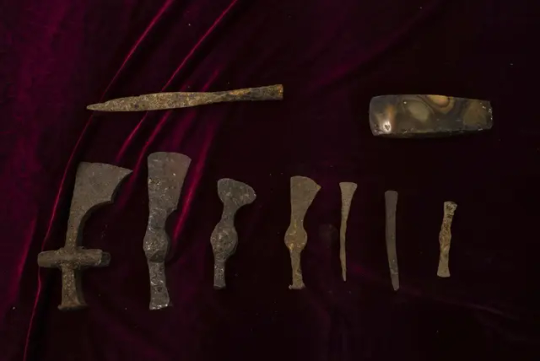
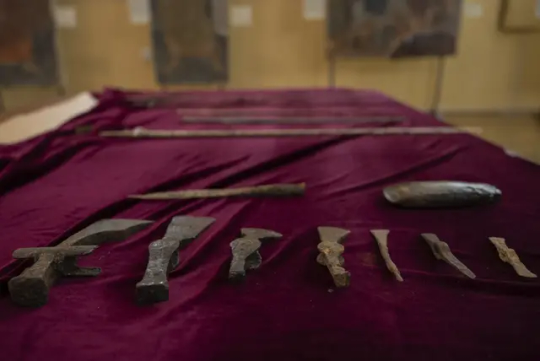
The Russian invasion of Ukraine, now in its second year, is being accompanied by the destruction and pillaging of historical sites and treasures on an industrial scale, causing losses estimated in the hundreds of millions of euros (dollars), Ukrainian authorities say.
Most of the artifacts returned were handed over to Ukraine during the visit of President Volodymyr Zelenskyy to the United States in September.
The accompanying document disclosed the identity of the individual responsible for the unlawful importation of artifacts, revealing that he hails from Krasnodar, Russia.
The acting director general of Kyiv-Pechersk Lavra, Maksym Ostapenko, estimated the value of the repatriated items to be around $20,000. But he emphasized that each artifact, given its age, is a significant cultural treasure.
Karandieiev also highlighted a case where 16,000 items were found to be missing from the art museum in Kherson after Ukrainian forces liberated the city following a nine-month Russian occupation.
“How long it will take to return our treasures, our artifacts, is hard to say,” he concluded.
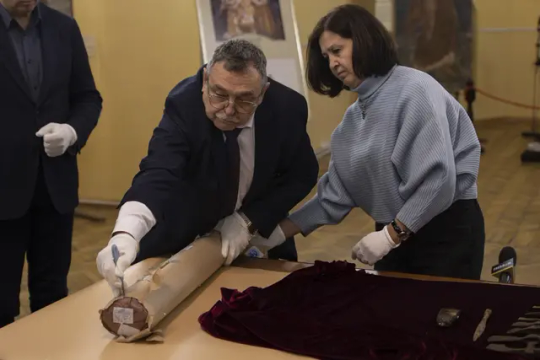

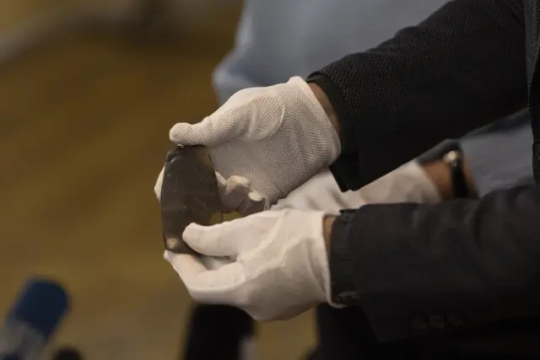
#ukraine#russia#Ukraine Displays Recovered Artifacts Stolen by Russians#russian war on ukraine#russian war crimes#russian war criminals#looted#looted art#stolen#ancient artifacts#history#history news#ancient history#ancient culture#ancient civilizations
192 notes
·
View notes
Text
JTTWR Story Idea Directory
I was influenced by @digitalagepulao's recent post to list my own collection of story ideas.
These are set in the Buddo-Daoist disc world system of the original novel.
1) The Origin of Sun Wukong
This provides three fictional origins for the Monkey King based on my past research. He is ...
The spiritual offspring of supreme ape immortals who have served as teachers of countless mortal and divine beings, the later including the Buddha and Master Subodhi. The couple rebels against the heavenly hierarchy for failing to keep an ancient promise.
The offspring of an ancient evil who intentionally bred him to destroy the gods.
A former hot-tempered, Vajra warrior-like Bodhisattva who is exiled from paradise for killing a being who seemingly offended the Buddha. He is punished to ten lifetimes as a figure of great strength who is continually bested and forced by circumstances to protect something or someone weaker than him.
Each origin has pros and cons.
2) Immortal Warriors and Shaolin Monks
Master Subodhi's mountain is the training ground for an immortal monastic army similar to Shaolin. Monkey gains combat experience as a monk soldier.
3) The REAL Reason Subodhi Expels Sun Wukong
Sun's much, much older spiritual brothers and sisters attack him out of jealousy for quickly climbing the ranks of the immortal monastic army. Forced to defend his position, Monkey's anger drives him to take on a monstrous, 100,000-foot-tall cosmic form to defeat his opponents. Subodhi fears Sun's limitless potential and great anger will lead him down the path of villainy, so he uses the pine tree incident as an excuse to expel him.
4) The Reason for Sun Wukong's Rebellion
Subodhi warns Monkey to protect himself when mastering the "Multitude of Terrestrial Killers" (i.e. the 72 changes) because said deities are considered baleful stellar gods who bring bad luck and disease. But the Terrestrial Killers exploit a chink in his spiritual armor and feed him small suggestions that have compounding effects on his personality, making him increasingly egotistical and combative. This eventually leads to his rebellion against heaven.
These are set on our Earth.
1) Sun Wukong vs Heracles/Hercules
Heracles, the Buddha's protector, is called in place of Erlang to end Monkey's rebellion. After the latter attains Buddhahood at the end of the journey, the Tathagata asks the son of Zeus to escort Sun through the Greek world system.
See the 07-08-22 update (refer also to section 3 for background info):
2) A Realistic Retelling of Journey to the West
The story follows the itinerary of the historical monk Xuanzang, and the various episodes from the original novel take place both on the way to and coming back from India. The disciples are acquired during the initial journey; however, their order is reversed—Sha, Zhu, and then Sun.
The past punishments of the disciples are still the same. But Monkey's history is changed because Taoism didn't exist in ancient India. Instead of becoming an immortal, he is a Hindo-Buddhist rishi who rebels against heaven.
See updates here and here.
#Sun Wukong#Monkey King#Journey to the West#JTTW#Zhu Bajie#Zhu Wuneng#Sha Wujing#Sha monk#Sandy#Pigsy#Tripitaka#Xuanzang#alternate universe#lego monkie kid#buddhism#taoism#daoism#Hinduism#Chinese mythology#Hindu mythology#Buddhist mythology#Greek mythology#Hercules#Heracles#story ideas
87 notes
·
View notes
Text
Ach-To and Irish Archaeology
The sequels were my entry into Star Wars and I never would have gone to see The Force Awakens if I wasn't an archaeology nerd.
During the production of Episode VII, a decent number of people with an interest in our archaeological heritage here in Ireland were quite worried about the impact of filming on one of our only two UNESCO World Heritage Sites, the island known as Skellig Michael down off the coast of Kerry.
I went to the film to see if any potential damage was worth it, or if they'd do something unspeakably stupid with it in-universe. I wanted to see if it was respected.
And holy hell I was NOT disappointed. I think I walked out of TFA sniffling to myself about how beautiful the Skellig looked and how it seemed like its use as a location was not just respectful but heavily inspired by its real history.
See, Skellig Michael was a monastic hermitage established at a point when Christianity was so new that the man who ordered its founding sometime in the first century CE was himself ordained by the Apostle Paul. The fellah from the Bible who harassed all and sundry with his letters, THAT Apostle Paul. This is how old a Christian site the Skellig is. It predates St. Patrick by at the very least two hundred years.
The steps we watch Rey climb were originally cut NEARLY TWO THOUSAND YEARS AGO. They have been reworked and repaired many many times since, of course. Still, the path the camera follows Daisy Ridley up is as much an ancient path built by the founders of a faith in real life as it is in the movies.
A hermitage was a place where monks went to live lives of solitude and asceticism so as better to achieve wisdom. The practice is common to many of the major world religions, including the myriad East Asian faiths which inspired the fictional Jedi.
It is said that the hermitage and monastery were originally built with the purpose of housing mystical texts belonging to the Essanes, one of the sects of Second Temple Judaism which influenced some of the doctrines of Christianity. They also, according to what I have read, characterised good and evil as 'light' and 'darkness' and were celibate.
As such, the use of the island in TFA and TLJ does not merely respect Skellig Michael's history, it honours it. It is framed as somewhere ancient and sacred, which it is. It is framed as a place where a mystic goes to live on his own surrounded by nature that is at once punishing and sublime, which of course it was. It shown to be a place established to protect texts written at the establishment of a faith, which it may well have been.
This level of genuine respect for my cultural heritage by Rian Johnson in particular is astonishing. I don't think anyone from outside the US ever really trusts Americans not to treat our built history like it's Disneyland. Much of the incorporation of the Skellig's real past into a fictional galactic history occurs in TLJ, which is why I'm giving Rian so much credit.
It's Luke's death scene which makes the honouring of Irish archaeological history most apparent though.
Johnson takes the archaeological iconography back a further three thousand years for his final tribute to my culture's beautiful historical temples. This time, he incorporates neolithic passage tomb imagery, specifically that of Newgrange, which is up the country from the Skellig.
I think if you understand what the image represents then it makes a deeply emotional scene even more resonant.
The scene I'm referring to is Luke's death.
As he looks to the horizon, to the suns, we view him from the interior of the First Jedi Temple. The sunset aligns with the passageway into the ancient sanctuary, illuminating it as he becomes one with the Force.

As for Newgrange, every year during the Winter Solstice it aligns with the sunrise. The coldest, darkest, wettest, most miserable time of the year on a North Atlantic island where it is often cold, wet, and miserable even in the summer. And the sun comes up even then, and on a cloudless morning a beam of sunlight travels down the corridor and illuminates the chamber inside the mound.
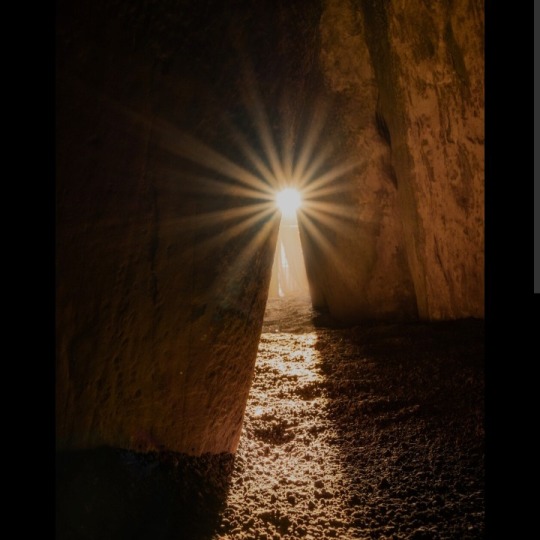
You guys can see this, right? The similarity of the images? The line of light on the floor?
Luke's death scene is beautiful but I think it's a thousand times more moving with this visual context. Luke's sequel arc isn't merely populated by a lore and iconography that honour the place where the end of his story was filmed, I think that incorporation of that history and mythology honours Luke.
We don't know for sure what the Neolithic people believed, religion-wise. We know next to nothing about their rituals. We know that there were ashes laid to rest at Newgrange. There is some speculation that the idea was that the sun coming into the place that kept those ashes brought the spirits of those deceased people over to the other side.
It's also almost impossible not to interpret the sunlight coming into Newgrange as an extraordinary expression of hope. If you know this climate, at this latitude, you know how horrible the winter is. We don't even have the benefit of crispy-snowwy sunlit days. It's grey and it's dark and it's often wet. And every single year the earth tilts back and the days get long again.
The cycle ends and begins again. Death and rebirth. And hope, like the sun, which though unseen will always return. And so we make it through the winter, and through the night.
As it transpired the worries about the impact of the Star Wars Sequels upon Skellig Michael were unfounded. There was no damage caused that visitors wouldn't have also caused. There also wasn't a large uptick in people wanting to visit because of its status as a SW location, in part I think because the sequels just aren't that beloved.
But they're beloved to me, in no small part because of the way they treated a built heritage very dear to my heart. I think they deserve respect for that at the least.
#star wars meta#ach-to#irish history#Irish Archaeology#first jedi temple#skellig michael#newgrange#luke skywalker#the last jedi#early christianity#neolithic#historical parallels in star wars#star wars and history#star wars and mythology#star wars and archaeology
128 notes
·
View notes
Photo

The Solovki Islands, in the middle of the White Sea, not far from the Arctic Circle, are an archipelago battered by blizzards with temperatures dropping below 50° for eight months of winter.
This is where the first Soviet camp designed and built to last developed, spreading from island to island, taking over the buildings and old churches of an ancient monastic community as it progressed.
by cartesdhistoire
57 notes
·
View notes
Text



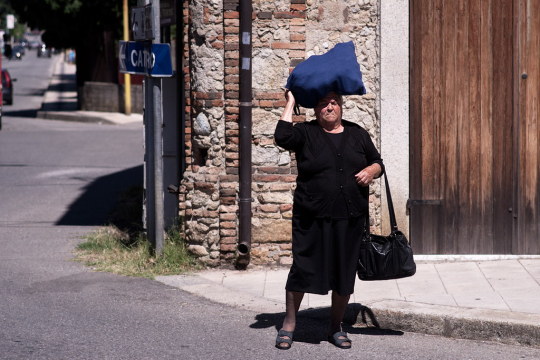


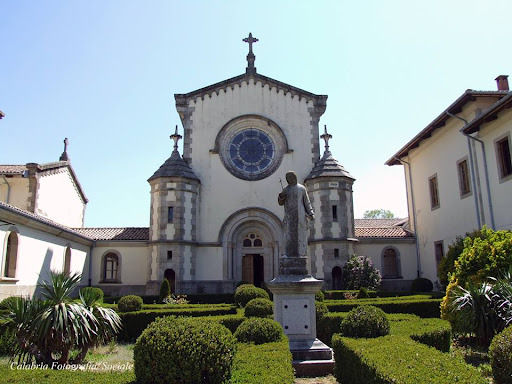



Serra San Bruno, Calabria, Italy
Serra San Bruno is surrounded by the lush forest of the Serre Mountains in the Province of Vibo Valentia. The town is named after Saint Bruno of Cologne, a monk who founded the Carthusian Order. In 1091, searching for a place of solitude, he built a monastery immersed in the rich natural beauty of the territory that is now known as Serra San Bruno. The town grew from it and is a wonderful place to visit, especially for those who enjoy nature and tranquility.
The Carthusian monastery La Certosa di Serra San Bruno was founded by St. Bruno in 1091. Located in the woods to the south, the actual monastery isn’t open to the public but visitors can go to the museum to get a feel for what life in a monastery is like. The silent stillness, melodic songs, and perfumes are peaceful. The museum is made up of 22 rooms rich with information describing the customs of the monastic life of the Carthusian monks. At the end of the tour, there is a small chapel that was once an ancient 16th-century tower.
Follow us on Instagram, @calabria_mediterranea
#serra san bruno#calabria#italy#italia#south italy#southern italy#art#architecture#mediterranean#italian#europe#landscape#italian landscape#landscapes#italian landscapes#flowers#woods#mountains#mountainscape
23 notes
·
View notes
Note
hiiiiii! Please tell us more about Relonoth if you don't mind 👀
How old is he?
What is his DnD alignment?
What's his tent in the camp like?
Does he have a partner(s)?
Hey @razrogue! Thanks for your interest in my TAV!
So fore warning, I'm not as knowledgeable about the larger DnD/Forgotten Realms lore and I've never played the previous Baldur's Gates so a lot of my knowledge comes from just playing Baldur's Gate 3. Also like many of my OCs, he goes through constant change as my knowledge of the lore expands and new ideas in my mind surface. With that being said:
Background: Relonoth is the son of a Seldarine Drow father and a Human Druid Mother. Relonoth lived with his mother and father in his mother's tribe for the first 12 years of his life where he learned the basics of living in the wild before she was killed fighting alongside his father during an attempt of his father’s life by Lolth's Drow. Not wanting to endanger the tribe further, Relonoth's father would take him far away from the tribe where they traveled aimlessly for several months. One day, they managed to stumble upon some helpful monks who were on their way back to their monastery. Sensing the torment inside both Relonoth and his father, the monks invited the two to journey with them back to the monastery to find inner peace. Relonoth and his father spent 7 years learning the ways of the monks and spent one more year traveling with each other after before deciding to continue on separate journeys. Before departing, they promised each other they would reunite for a single week at the place they left every 7 years to share with each other their monastic journeys. BG3 takes place 2 years before another reunion. Some of Relonoth’s experiences and adventures include finding his mother's old tribe, fighting in an underground martial arts tournament, mentoring other young monks, learning the way of the four elements from ancient beings, and putting stops to deadly conspiracies, but his greatest adventure takes place during BG3.
Name Origin: I found a Drow etymology naming convention sheet online and the name roughly translates to "Wind's Path" which I thought sounded cool. The in-lore reason I developed after was that his father named him that name because he wanted his son to have the freedom to become anyone he wanted in his life (Free like the Wind).
Age: 67 (as of BG3 - looks about 33 because of half elf aging)
DnD Aligment: Neutral Good (as a nomadic monk, he'll find himself helping the less fortunate and oppressed and generally respects the rules of the lands he comes across but still has his principles of freedom and choice which sometimes clash with more strict rules of some kingdoms. His nature of helping people and quickly disappearing in a gust of wind after earned him the title of The Wind Walker.)
Tent: His tent is very simple. Being nomadic, he likes to carry light but he's known to collect a few things from his travels and keeps them in his tent space (i.e. small gifts from his friends, rocks and feathers of birds from the different lands he visits and small things he thinks his father would like to see during their next reunion)
Romance: Karlach (I like to imagine that after finding a solution to her infernal engine problem, the two escape Avernus and continue traveling the world with Karlach wanting to experience the grander world after spending years in Avernus and Relonoth wanting to continue his monastic journey with one he loves. She even gets to meet Relonoth's father during the reunion. Really want to get a comic commission of this lol.


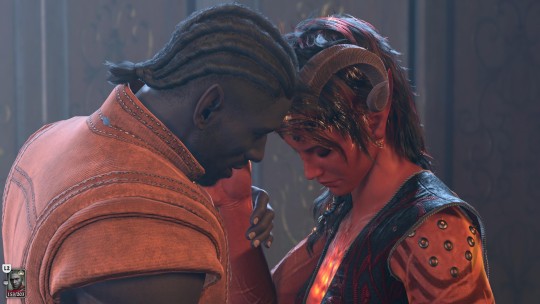
25 notes
·
View notes
Text

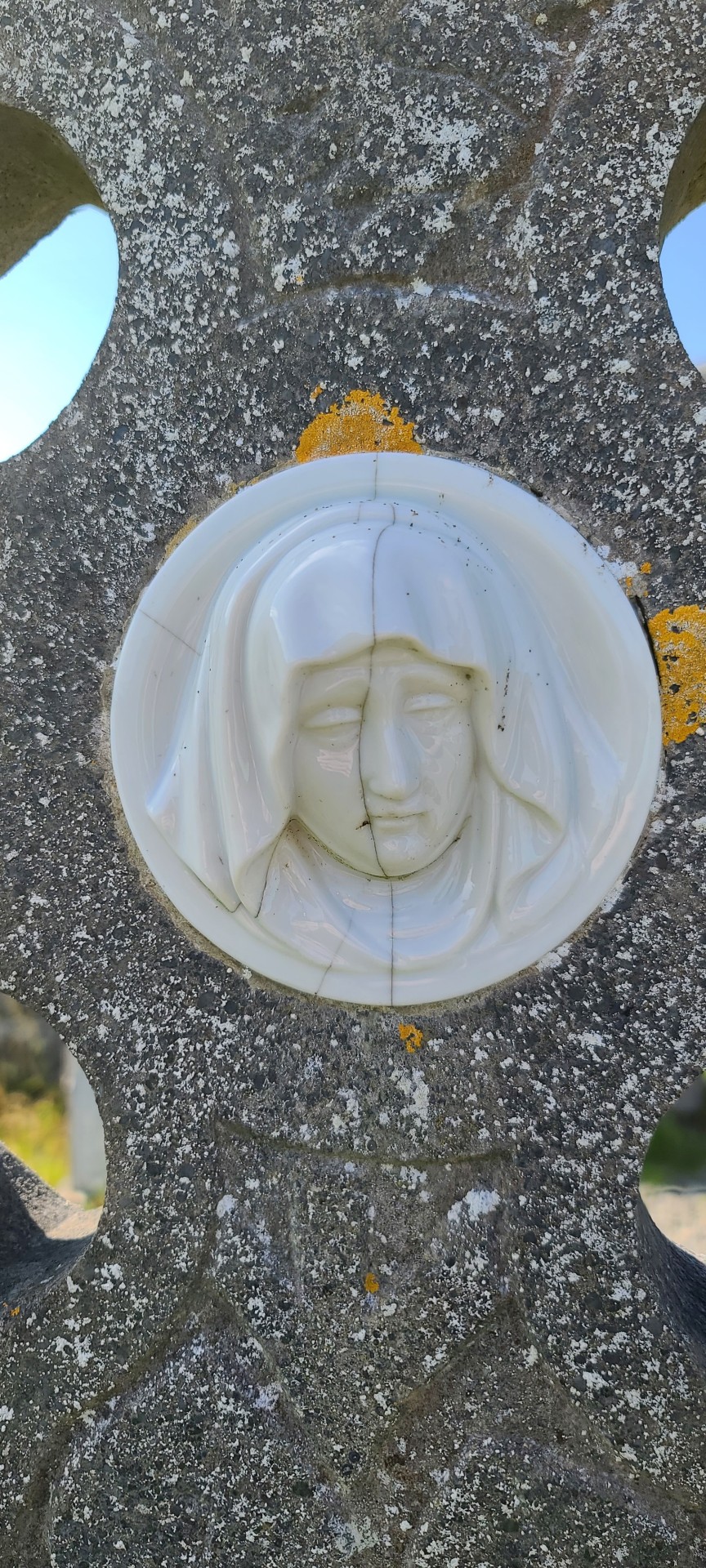


Na Seacht dTeampaill - The Seven Churches, Sruthán, Onaght, Aran Islands, Co. Galway
#Celtic cross#Na Seacht dTeampaill - The Seven Churches#Aran Islands#na seacht dteampaill#seven churches#inis mór#inishmore#Benedict#Benedictine monastery#ancient monastics#Saint Benedict#mary#beloved mother#goddess#divine feminine#gay mystic#queer mystic#mysticism#contemplative traditions#cemetery#ancient burial
3 notes
·
View notes
Text
Sailing toward the Wild Dark: A Short Reflection on My Patronal Feast and Nameday
There wasn’t a lot of institutional bureaucracy yet in the Irish Church in St. Brendan’s time—certainly very little that would affect a monastic founder in the west of the westernmost portion of Europe. The Saint was still very close—temporally, and probably in other ways as well—to the pre-Christian legacy and indigenous sacred traditions of Éire. In a sense, his famous voyage was from the still wild to the deeper wild.
The context of my own life and ministry as a monastic founder in twenty-first century North America is of course radically different. In fact, I suspect there is very little that St. Brendan would recognize about the Church today—or the world of human affairs generally. When his Feast comes up each year in the sacral calendar, I take it as an opportunity to reflect deeply on the ever evolving shape of my own vocation. And this year I find myself reflecting specifically on questions about the monastic relationship to institution: a fraught and tenuous thing from the advent of Christian monasticism as a movement, during the reign of Constantine.
From the deserts of Egypt to the untamed wilds of ancient Ireland, Christian monasticism was originally an endeavor that by necessity extended itself outside the accepted boundaries of ordinary Church convention and bureaucracy. At its heart, authentic monasticism still moves in this way, and must always do so, even if outwardly its radical witness has been hobbled, diminished, or diluted. In all the religious traditions that contain monastic expressions, it has always had this basic shape, being in essence the courageous journey of bold individuals who are willing to sacrifice everything in order to discover directly for themselves what is ultimate, what is true—and who are willing to walk beyond the safety of the communal firelight to make that discovery.
As with everything wild and prophetic, the Western dominator agenda sought from the start to tame and institutionalize the monasticism that rose up organically from the core archetypal impulse of asceticism, and from the social role and spirit of the rebel truth seeker, a pregnant void of which is left when agendas of control are allowed to reign. To a large extent the dominator force succeeded in its evil works, particularly with contexts like the Benedictine order, which became so institutionalized as to be almost unrecognizable in reference to its own monastic roots. Resultantly, there had to be reform after reform to try to recapture some of the original essence of the ascetical life and witness. Always in the West there has been this tension and pull from the institutional center of gravity, which is ever attempting to tame, to make ‘safe’ and manageable, controllable, and quantifiable the real Mystery which moves in the dark beyond its line of sight.
Of course, this agenda of control is a fool’s errand, ultimately. Yet, sadly, the will and attempt to continually whitewash the Mystery has had a vastly deleterious effect on Western cultures and societies, and, perhaps most markedly, on Western Christianity.
I am convinced that the monastic impulse to go courageously and directly into that which is fearful and unknown carries a special prophetic signature in today’s Church, at this historical moment in the twilight hours of the Church’s structural stability. In short, we monastics have the medicine, even if no one is willing to take it. For my part, I continue to be committed to faithfully calling out invitations for those on the sinking ship to leap toward the life-raft.
True to archetypal monastic form, my own place in the Church is and always has been marginal—and that’s as it must be. I’m somewhat of a relic, it seems: an instantiation of the old untamable ascetic who won’t play institutional games and won’t stop speaking from the shadowy wilderness just beyond its boundaries into the institutional morass, pointing out the failings of the assumed construct, and suggesting radical ways to transcend those failings—much to the chagrin of all those who are committed to institutional hegemony and the comfortable, easy path. By this point I know perfectly well my actual role and vocation, and am totally comfortable and at peace with it. I have even come to find genuine amusement in the troubled, suspicious responses of Church folk who resist or can’t grasp what I’m here to do.
But what brings me deeply into careful discernment these days, as someone who has spiritual children to guide and feels an immense responsibility to each and every one of them, is the direction in which to point my students with relation to institutional structures. Perhaps it’s less about broad direction, and more about degree.
As a Spiritual Father to monastics (and non-monastics as well), my core aim is always to shepherd and equip those who are ready for the real quest of existential excavation and illumination—and to help guide and point the way in such a manner that all non-essential material, detours, and distractions are completely forgone.
I recently shared with members of our religious order that, when it comes to decisions related to institutional collaboration or development, which would involve us in having to wade further into the swamp of Church bureaucracy, stagnation, and ignorance of the importance of who we are and what we do as vowed religious, I am constantly asking myself: ‘Is this really going to help us as a community? Is it going to further our spiritual aims and our core mission, or is it only going to waste time, cause aggravation, and distract us from what is really essential by sailing us straight into the mire of institutionalized absurdity?’
Sometimes the answers to these questions do not come easily. And the questions haunt, because I know full well that our time in this life is too short and unpredictable to fritter away on anything other than what is absolutely essential.
St. Brendan set sail in a wood and leather coracle with fourteen of his monastic disciples—not toward any institutional iteration, but toward the totalizing darkness of the utterly unknown: into the oceanic desert of the Mystery, the shattering, transformative wild, in order to more fully actualize the goal of all ascetical life, which was articulated so beautifully and concisely by St. Macarius the Great: to die to ourselves and to the world, that we may live as one with God.
May our holy Father among the Saints, Brendan of Clonfert, the namesake in whose radiant witness I always feel unworthy, bless me and all monastic shepherds with the wisdom to navigate unflinchingly by the singular star of Truth, to sail clearly and directly toward the only destination that is ultimately worth pursuing: non-dual awakening in and as the Uncreated Light.
Fr. Brendan+
Feast of St. Brendan of Clonfert, 2023
#brendanelliswilliams#fatherbrendan#monastic#monasticism#priest#ascetic#theology#religion#spirituality#spiritualjourney#awakening#spiritualawakening#nonduality#wisdom#ancient#tradition#irish#gaelic#saintbrendan#church#institution#courage#inspiration#reflection#depth#interreligious#teacher#spiritualteacher#spiritualdirector#author
1 note
·
View note
Text
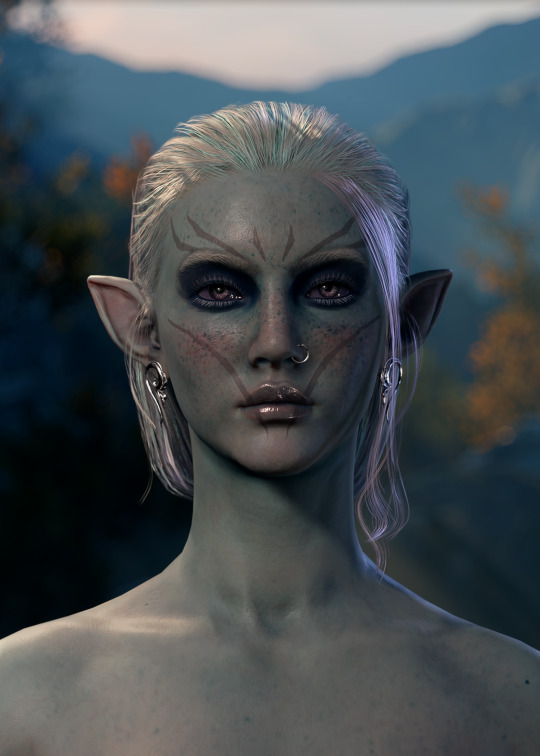
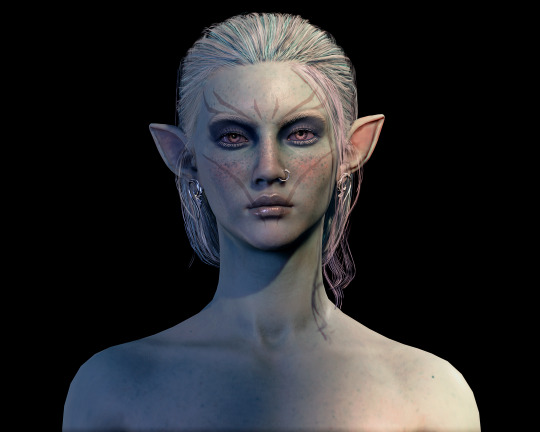
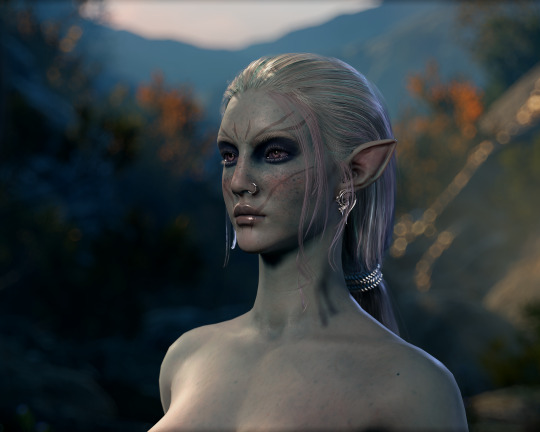

Soluwae / Lolth-sworn Drow / Cleric of Lolth
she has a face now!! some fun facts about Soluwae:
she was born via an ancient ritual created by one of her ancestors (coincidentally, the same ritual that birthed Aune!)
pronouns she/her. intersex. LESBIAN
she is part of the Cult of the Silken Weaver (also known as the Ouss'val), a fringe cult of Lolth which was founded by her family. It is old and not very well-known, by design; this has aided in its survival over the years
She serves as the cult's Inheritor (a title for the High Priest/ess; a 'Chosen One' type of role)
before Soluwae, it had been some time since an Inheritor was born. When she was finally ushered into the world, most of the cult took her strange appearance as a sign that there was something special about her, and later confirmed her Inheritor status when her abilities eventually manifested
Soluwae calls the Feydark home (and the Underdark, by extension). The cult's sanctum is located in an extensive cavern system within the Feydark
the markings on her face are scarification, not tattoos. Every member of the cult shares the same scars
Soluwae later respecs as a monk; within her cult, there is a monastic order which follows the Way of the Many-Limbed (a blend between the Way of the Open Hand + the Way of Shadow). The monks are called gloomweavers, and their style of combat is based off of arachnid behavior and abilities
Soluwae has some spider-like characteristics that unsettle her companions. She has a habit of making a low clicking noise in her throat when she is content. Sometimes it calls nearby spiders to the area. (Gale really dislikes this.) On occasion, when she battles, a spectral image of two extra set of appendages seem to extend from her back
she is curious, impatient, and very spoiled; long accustomed to others doing everything for her. However, she has moments of gloominess in which she withdraws from others. Despite seeming immature at times, she has a strong sense of responsibility to her cult and its preservation
Soluwae plays cat's cradle when she's bored (this would be her most common camp idle)
#I love her nose so much... it's giving dalish elf realness#she's been possessing me the last couple of weeks but I can't actually play with her because 1) other playthroughs to do#but more annoyingly 2) minthara is bugged to high hell and I want her and soluwae to be madly in love and together forever#anyway. YEAH. soluwae exists in tav!aune's worldstate. she just obviously doesn't ''become'' Tav. I don't think the two will ever meet but#aune definitely interfaces with the cult post-game#oc: soluwae#bg3 tav#bg3 oc#bg3#tav
20 notes
·
View notes
Text

A painted image of the local female mountain deity Niu Myōjin (丹生明神), thought to have given her approval to the Shingon founder Kūkai (空海) a.k.a. Kōbō Daishi (弘法大師) to establish his monastic center upon her territory of Mount Kōya
Color on silk dating to the Kamakura period (1185-1333) from the collection of Kongōbuji Temple (金剛峯寺) on Mount Kōya (高野山) in Wakayama Prefecture
Image from "Shintō: The Sacred Art of Ancient Japan" edited by Victor Harris, published by the British Museum Press. 2001, page 171
#japanese art#buddhist art#丹生明神#niu myojin#和歌山県#wakayama prefecture#高野山#koyasan#mount koya#金剛峯寺#kongobuji#真言宗#shingon#crazyfoxarchives#arte japonés#arte budista
31 notes
·
View notes
Text

A Very Rare Medieval Pocket Sundial Discovered in Germany
A rare Medieval sundial, which is approximately the size of a matchbox was discovered in the old town of Marburg, Germany.
According to a statement from Marburg University, students were digging a church site in the town when they discovered the sundial. The sundial is constructed of bronze and wood.
The old clock, which is thought to be from the late medieval era, is thought to have belonged to the Brethren of the Common Life, a monastic order that was founded in the Netherlands in the late 14th century. It was a community established by Gerard Groote, a Dutch Catholic deacon. Eventually, the Brethren spread to the Netherlands, Germany, and Switzerland. They settled in the old monastery structure from 1527, situated in the upper part of Marburg.
“The sensational find provides a clear insight into the meeting of a high level of knowledge in astronomy and mathematics with specialized craftsmanship on the threshold from the Middle Ages to modern times,” explains the head of the educational excavation,” Professor Dr. Felix Teichner said in a press statement.
According to Professor Teichner, of the Department of History and Cultural Studies at the Philipps University of Marburg, it’s the first time an object like this has been found in Hesse, the German state, and not many such sundials are left.
Archaeologists compared the unusual find with a similar one discovered by archaeologists in a Swiss ministry to identify the artifact. According to Teichner, they still don’t know why the sundial was discovered in the specific location.
Ancient clocks called sundials tracked the sun’s position throughout the day to determine the time. They are made up of a flat plate and a gnomon, which, when the sun shines, casts a shadow on the plate. Sundials have been around since at least 1500 BCE.
When this specific sundial is opened, a hole that was intended to hold a stick for marking the sun’s shadow is visible.
Portable sundials have existed since ancient times, and by the 1600s, some Europeans were carrying pocket-sized sundials.
Excavations at the site are continuing, in the hopes of unearthing more rare finds.
By Leman Altuntaş.

#A Very Rare Medieval Pocket Sundial Discovered in Germany#Marburg Germany#Brethren of the Common Life#ancient artifacts#archeology#archeolgst#history#history news#ancient history#ancient culture#ancient civilizations#medieval era
79 notes
·
View notes